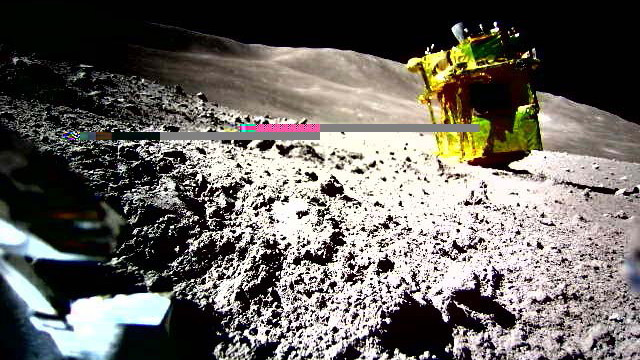Japan's lunar module has been put into sleep mode after surprisingly surviving the frigid two-week lunar night, the country's space agency said.
The unmanned Smart Lander for Investigating Moon (SLIM) landed in January at an odd angle, causing its solar panels to face the wrong way.
When the angle of the sun changed, it came to life for two days and made scientific observations of the crater with a high-tech camera.
This week, SLIM, who was "not designed for the harsh lunar nights" when the temperature drops to minus 133 degrees, gave another surprise by waking up after two weeks.
"SLIM fell asleep again as the sun set after 3 a.m. (Japan time) on March 1," the Japan Aerospace Exploration Agency (JAXA) said in X, along with a photo of the rocky lunar surface captured by the probe, AFP reported.
"Although the probability of failure will increase due to severe temperature cycles, we will attempt to operate SLIM again when sunlight returns in late March," JAXA announced.
The announcement comes after the U.S. unmanned Odyssey lander became the first privately owned spacecraft to land on the moon.
The lander sent its last image on February 29 before the batteries powering it ran out.
SLIM, nicknamed the "Lunar Sniper" for its precision landing technology, landed within its target area on January 20.
The achievement is a victory for Japan's space program after a string of recent setbacks, and makes the country only the fifth to achieve a soft landing on the moon, after the United States, the Soviet Union, China and India.
The purpose of the mission is to probe a part of the Moon's mantle - usually the deep inner layer below its crust - that is believed to be accessible.
NASA plans to return astronauts to the moon later this decade.
The US, along with international partners, wants to ultimately develop sustainable habitats. /BGNES







